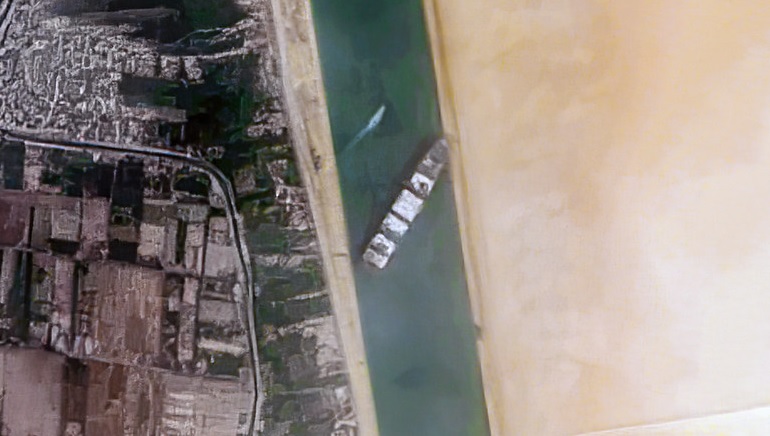Where and What is the Suez Canal? Here’s a Snapshot
Written by Prakriti Panwar, a grade 12 student.
The Suez Canal is a ‘sea level waterway’ that links the Isthmus of Suez to the Mediterranean (lies between Egypt, Libya, Tunisia, Algeria, Morocco, Spain, France, Italy, and Turkey) and the Red Sea (lies between Saudi Arabia, Yemen and Sudan, Ethiopia and Egypt)…
Written by Prakriti Panwar, a grade 12 student.
The Suez Canal is a ‘sea level waterway’ that links the Isthmus of Suez to the Mediterranean (lies between Egypt, Libya, Tunisia, Algeria, Morocco, Spain, France, Italy, and Turkey) and the Red Sea (lies between Saudi Arabia, Yemen and Sudan, Ethiopia and Egypt)
A quick backstory
Considered as one of the world’s busiest shipping lanes today, the Suez Canal’s history can be traced back to ancient Egypt. The canal was apparently built in the 3rd century BC and notable people such as Cleopatra travelled on it too. Then known as the Canal of Pharaohs, this canal was mainly used to access the Mediterranean. Though this legend has not been confirmed yet, it is interesting to know that the idea of this modern-day structure may actually have been conceived long back.
It is also said that the British originally opposed the construction of the Suez Canal. This was because the project had partly received support from the French, which was then seen as an “act of defiance.” Hence, when the time of auction came after a while, the British ended up buying 44 percent of the shares and became the majority stakeholder.
Why is it so important?
Economically, the Suez Canal is of great importance to Asia, Middle East, and Europe as it provides an important link for energy, commodities, and consumer goods. It transfers about 7-10 percent of the world’s oil and an estimate of one billion barrels of oil cross the Suez Canal every day. The Expansion Project of the Suez Canal, which was undertaken to widen the canal, further increased the annual revenue of the canal, thus making it cost-effective as well as efficient.
The Suez Canal has been particularly beneficial for India as a lot of our exports and imports rely on international trade. Simply put, we receive raw materials from the west (Europe and America) and we export finished products (which are assembled in India).

Source: Wikimedia Commons
The recent blockage
All this said, it can be naturally understood that the blockage of the canal would have had an overwhelming impact on the world economy. For one, the blockage created by the container ship that was stuck in the canal for six days led to significant monetary losses. Each day of the blockage cost a loss of about 9 billion and the loss faced by individual countries was much more. It led to a chain of events. The disruption led to delay, the delay led to a rise in prices, and both combined led to the cancellation of shipments, which resulted in further losses.

Image Source: https://www.flickr.com/photos/pierre_markuse/51070311183
However, the period of losses soon ended when the ship was freed. This was done by digging up 30,000 cubic metres of sand from under the ship and was considered to be a great feat. Though this incident was unfortunate, it did probe conversation about managing the canal’s traffic better and making it safer and convenient.
Know some fun facts you’d like to share? Send them here. You can also apply to become a news anchor. Apply here



Comments